Originating from the streams of India and Bangladesh, Zebra Loach are a great loach option for their quirky personalities, cleanup crew hard-work and snail population control.
Scientifically known as Botia striata, adding a Zebra loach to your aquarium has many benefits, as long as you know the potential downsides of this community loach.
Unique Fact: Zebra Loaches are known for their playful nature and distinctive stripes, resembling a zebra pattern, hence their name.
In this guide, we’ll dive into everything you need to know about Zebra Loach care.
From understanding their unique characteristics to ensuring they thrive in your aquarium, this guide is your go-to resource for a healthy and long-lasting group of Zebra Loaches.
Proper care is crucial for these delicate creatures even if they are a hardy species. Without it, they won’t reach their full lifespan, which can be up to 10 years with the right conditions.
I’m excited to share my years of aquarium experience to help you understand and care for these beautiful and quirky little loaches!
Table of Contents
Zebra Loach: Quick Facts Table
| Name | Zebra Loach |
|---|---|
| Scientific Name | Botia striata |
| Max Size | 4 inches (10 cm) |
| Lifespan | Up to 10 years |
| Appearance | Slender body with distinctive black and white stripes |
| Temps | 23-26°C |
| Water Parameters | Soft to moderately hard; pH: 6.0-7.5 |
| Compatibility | Peaceful; suitable for community tanks with non-aggressive species |
| Community | Group of 4 or more for best social interaction |
| Behaviour | Social, active, enjoys hiding spaces |
| Lighting | Moderate |
| Feeding | Omnivorous—enjoys a varied diet of flakes, pellets, and live or frozen foods |
| Breeding Difficulty | Moderate, rarely bred in home aquariums |
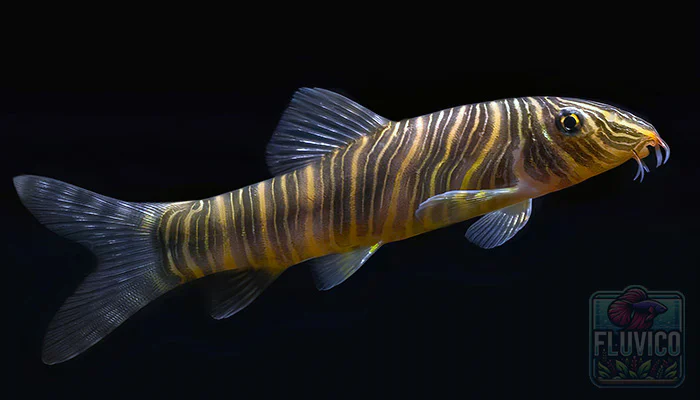
Zebra Loach Species Profile
Known scientifically as Botia striata (Striata meaning striped or striated & Botia their Genus), they are a popular choice in home aquariums due to their striking patterns that help them to blend into their natural freshwater river environment.
Unique Fact: The Zebra Loach is often mistaken for its close relative, the Yoyo Loach, but can be easily distinguished by its distinct striping pattern.
Physical Characteristics:
What sets the Zebra Loach apart is its vibrant, zebra-like striping, which runs along its body horizontally. They typically grow to about 4 inches in length, making them a perfect fit for most large home aquariums.
When identifying a Zebra Loach, look for their unique stripes and small, elongated body. The key difference with this loach lies in their striping pattern. Zebra Loaches have more consistent and parallel stripes, whereas Yoyo Loaches have a more random, ‘yoyo-like’ pattern.
In their natural habitat, Zebra Loaches are accustomed to clean, oxygen-rich waters, so you’ll want to mimic this as closely as possible with your tank setup.
Fun Fact: Despite their vibrant stripes, Zebra Loaches can adapt their colour slightly to blend into their surroundings, a handy survival tactic!
Zebra Loach: Care 101
Here’s a quick list to get you started on creating a habitat that your new Zebra Loach with thrive in.
- Tank Size Requirements:
- A 30-gallon tank is the minimum recommended size.
- Larger tanks are better, especially for groups.
- Ideal Water Parameters:
- Temperature: Keep between 73-79°F (23-26°C).
- pH: Maintain a slightly acidic to neutral range, 6.5-7.5.
- Hardness: Soft to moderately hard water, around 5-12 dGH.
- Regular water changes are crucial to keep these parameters stable in a well stocked tank. Alternatively, having a heavily planted tank will help stabilise water conditions.
- Habitat Setup:
- Use a sandy or soft substrate to protect their sensitive barbels.
- Add plants and driftwood for hiding places.
- Have areas with and without strong currents.
- Diet:
- Omnivorous: Feed a mix of high-quality flakes, pellets, and live/frozen foods.
- Include vegetable matter like blanched zucchini.
- Feed small amounts 2-3 times a day.
- Feed less is a biodiverse planted tank as they’ll eat small creatures that live in the substrate.
- Social Behavior and Group Size:
- Zebra Loaches are social and prefer being in groups.
- A group of at least 4 is recommended to see their natural inquisitive behaviour. Groups smaller than this are more likely to become nocturnal and shy.
- Tank Maintenance:
- Handling Stress and Acclimatization:
- When introducing Zebra Loaches to a new tank, do it gradually.
- Use drip acclimation to avoid shock from water parameter changes.
- Minimize handling and transport stress.
- Monitoring Health:
- Observe your Zebra Loaches for signs of stress or illness.
- Healthy Zebra Loaches are active and have a good appetite.
- Check for any abnormal swimming patterns or changes in appearance (Less vibrant stripes and sagging fins)
- Keep the tank clean but avoid over-cleaning as Zebra Loaches can be sensitive to drastic changes.
- Monitor filter performance and water flow regularly.
Fun Fact: Zebra Loaches are known to make clicking sounds, especially when they are happy or during feeding time.
Behaviour & Temperament of Zebra Loaches
Zebra Loaches stand out in the aquarium world, not just for their striking stripes but also for their fun behaviour and temperament.
Day-to-Day Behavior
- Active & Playful: Zebra Loaches are active swimmers. They love to explore every nook and cranny of their tank. You’ll often find them darting around or playfully interacting with tank decorations.
- Nocturnal Tendencies: Interestingly, Zebra Loaches are more active at night. So, don’t be surprised if they seem a bit shy during the day.
Interaction with Other Species
- Peaceful but Quirky: Generally, Zebra Loaches are peaceful. They coexist well with other fish but can be quirky in their interactions.
- Tank Mates: Ideal tank mates include other peaceful fish. Avoid aggressive species that might stress them out.
- Community Tanks: They thrive in community tanks, adding a lively and dynamic element to the mix.
Tank Mates
Choosing the right tank mates for Zebra Loaches isn’t too difficult.
Here’s a guide to help you pick the best companions and avoid unsuitable ones.
Ideal Companions for Zebra Loach
- Other Peaceful Fish: Opt for fish that share a peaceful temperament. Good choices include Tetras, Rasboras, and Danios.
- Other Loaches:
- Similar Size Fish: Fish of a similar size to Zebra Loaches tend to do well together. This prevents bullying or competition.
- Bottom Dwellers: Other bottom-dwelling species can be a good match, such as Corydoras or small catfish.
- Plants and Decorations: Make sure your tank has plenty of hiding spots. This helps in creating a stress-free environment for all fish.
Species to Avoid
- Aggressive Fish: Avoid aggressive or large predatory fish like Cichlids or Arowanas. They can stress or even harm your Zebra Loaches.
- Fin Nippers: Steer clear of known fin nippers like some Barbs. They can harass your Zebra Loaches.
Breeding
Breeding Zebra Loaches isn’t straightforward, but with these steps, you’ll be on the right path. Let’s break it down:
- Prepare the Breeding Tank:
- Use a separate tank to control conditions.
- Ensure clean, soft water with a pH of about 6.5-7.0.
- Temperature is crucial: Aim for 26-30°C.
- Select the Breeding Pair:
- Choose healthy, mature fish.
- Look for active and well-fed Zebra Loaches.
- Condition the Pair:
- Feed them a high-quality diet. Include live or frozen foods like brine shrimp.
- This step is key to getting them ready for breeding.
- Simulate Rainy Season:
- In their natural habitat, breeding is triggered by the rainy season.
- Mimic this by doing a large water change and slightly altering the temperature.
- Watch for Spawning Signs:
- Males chase females as a sign of readiness.
- Eggs will be scattered in hiding spots around the tank.
- Post-Spawning Care:
- After spawning, remove the adults to prevent them from eating the eggs.
- Keep an eye on the eggs. They should hatch in a few days.
- Raising the Fry:
- Feed the fry with suitable food like infusoria or finely crushed flakes.
- Water quality is even more crucial here.
Remember, every breeding attempt is a learning experience. Keep notes, observe carefully, and don’t be disheartened if success doesn’t come immediately.
Zebra Loach: Right for your aquarium?
Thanks for reading our Zebra Loach 101 Quick Guide! We hope this Zebra Loach Quick Guide gave you an insight into whether they’re a good fit for your fish tank community.
Now, the big question: Are Zebra Loaches the right choice for your aquarium?
If you’re ready for a bit of a challenge and keen to add some playful activity to your tank, Zebra Loaches will be a fantastic addition.
Comment below if you’ve decided to add these cute little loaches to your aquarium. : )







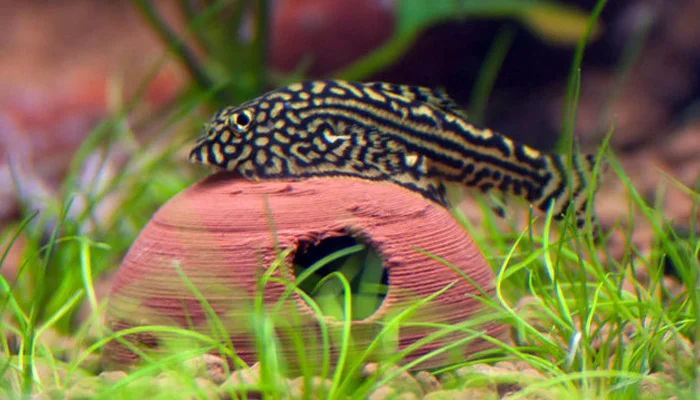
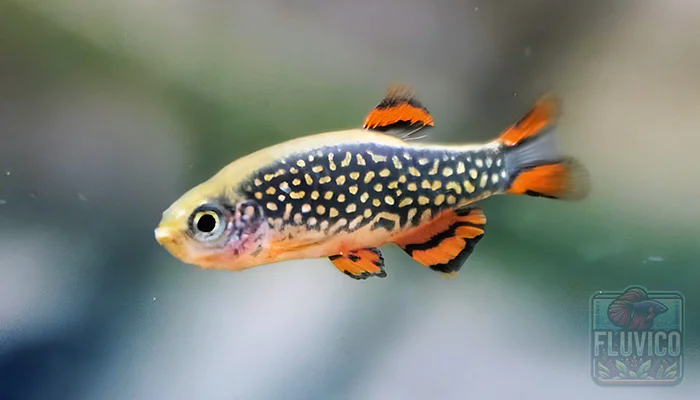
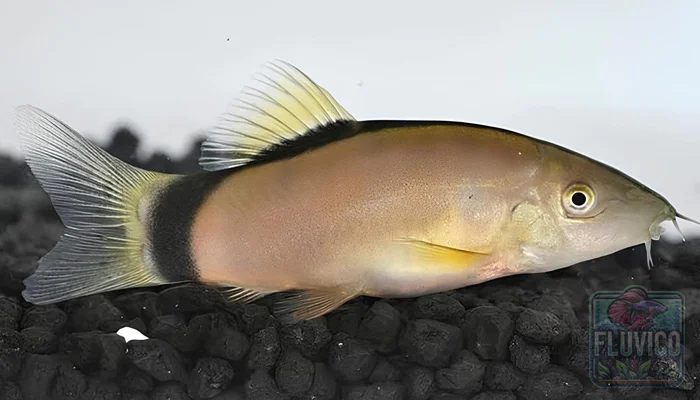
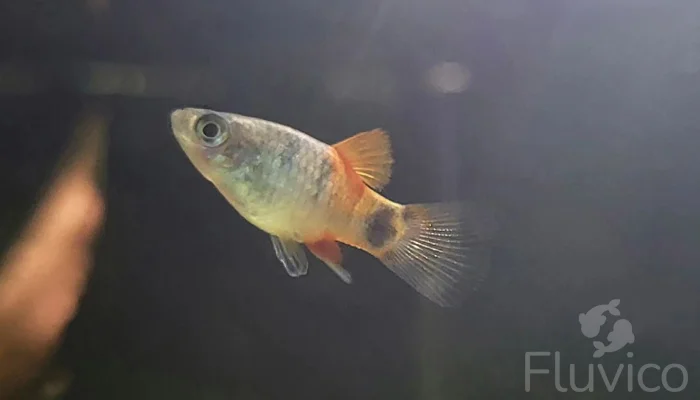
Leave a Comment